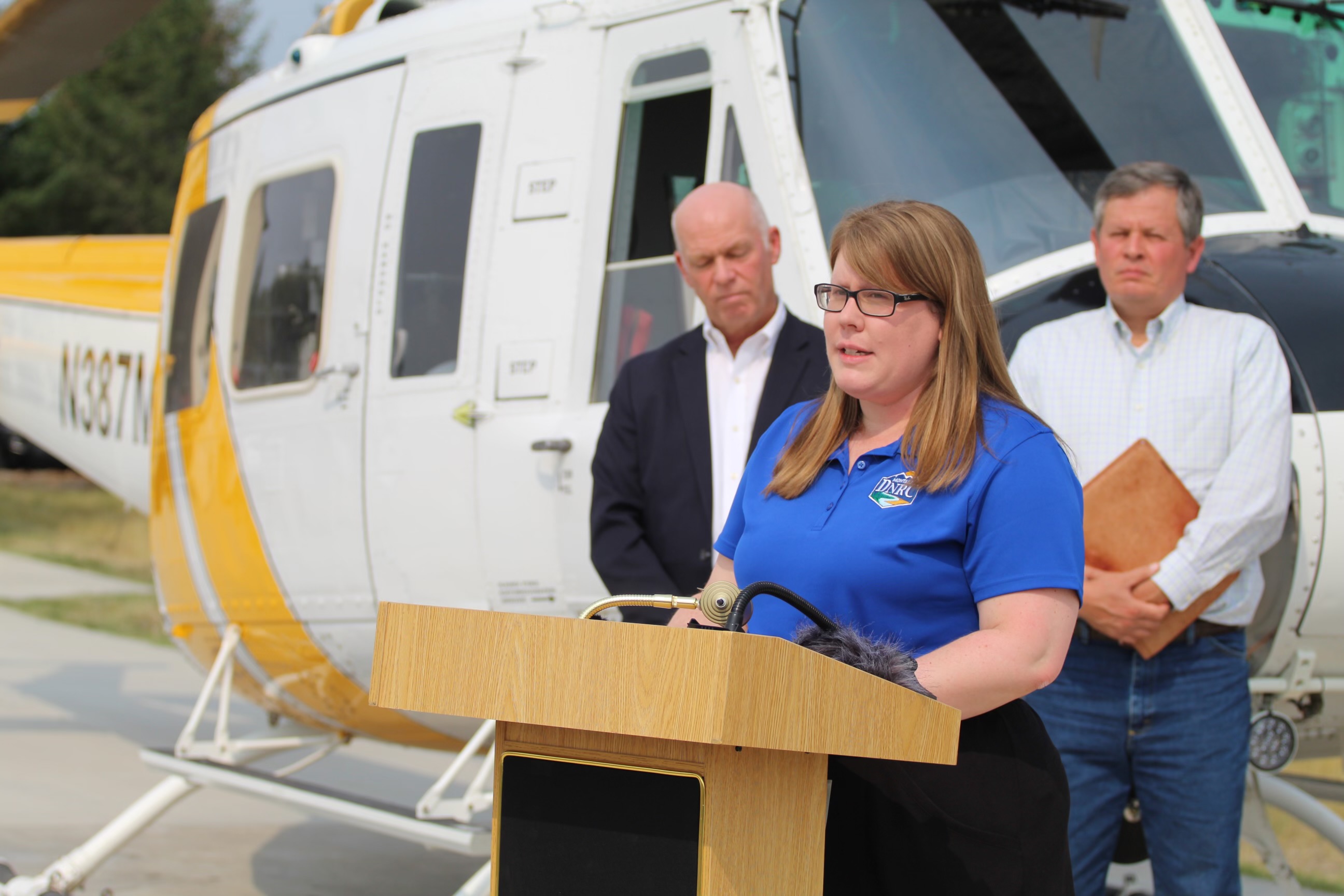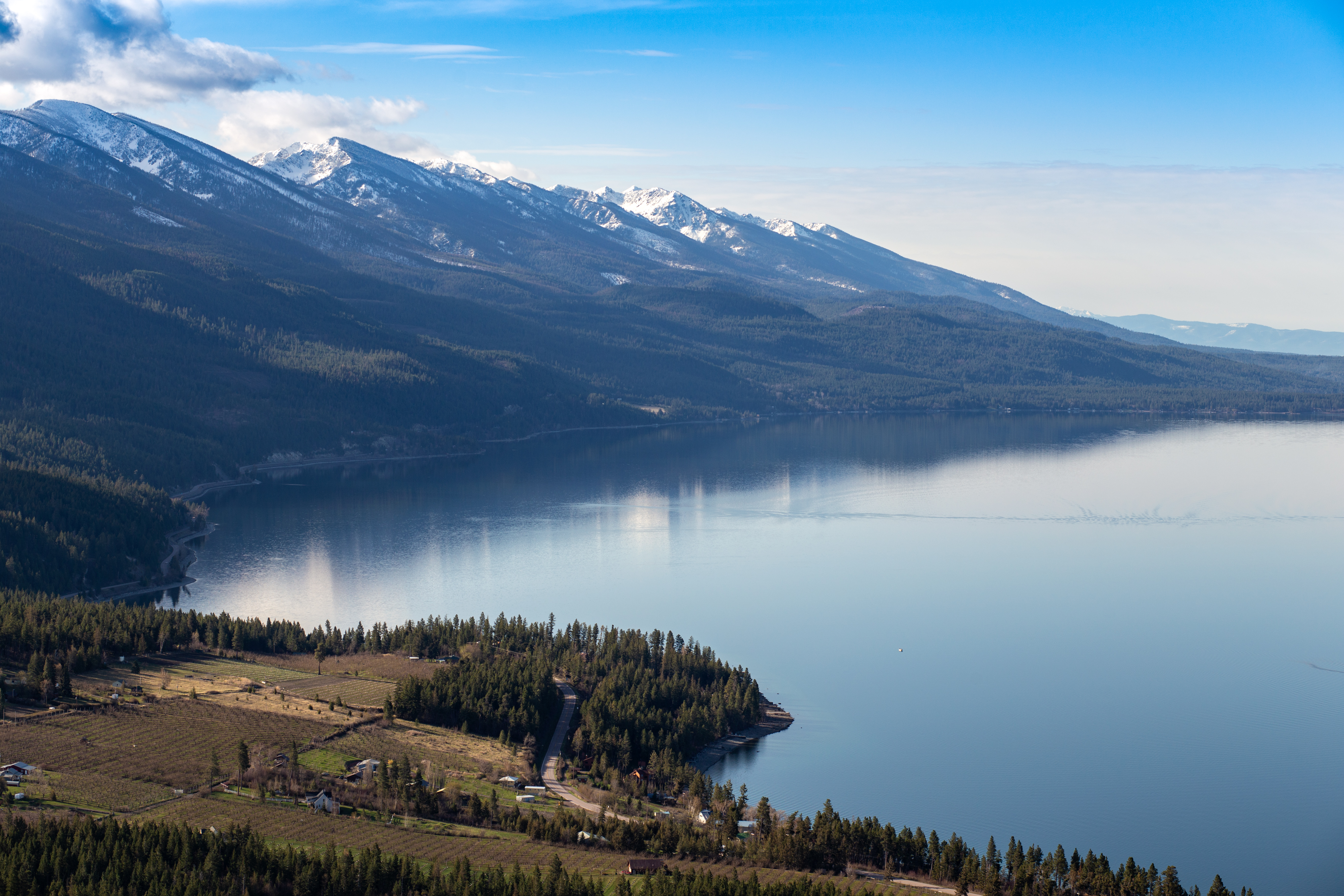
Meet Our Director
"Through our diverse programs, the 550 employees of Montana DNRC share a passion for stewardship and public service. I invite you to browse the pages of this website to learn more about who we are and what we do. Whether you need help with a water permit, want to learn how to better protect your property from wildfire, or are interested in finding State Trust Land for lease, we’re here to help. Thanks for letting us serve you." - Director Kaster
Amanda Kaster is the Director of the Montana Department of Natural Resources and Conservation. Appointed by Governor Gianforte, she has officially served in this capacity since January 2021.
Kaster has nearly 15 years of experience working on energy and natural resources issues. Prior to being appointed as the DNRC Director, she served as the Acting Deputy Assistant Secretary for Land and Minerals Management at the U.S. Department of the Interior. She was also the Acting Chief of Staff and Senior Advisor at the Bureau of Land Management and an Advisor in the Secretary of the Interior’s Office of Congressional and Legislative Affairs. Kaster has also previously worked for Congressman Ryan K. Zinke of Montana, the Bipartisan Policy Center, and Senator Olympia J. Snowe of Maine.
How does DNRC serve Montanans?
Under the leadership of the Director, the Department is managed by four Divisions which offer a variety of programs and services and carry out mandated regulatory and land management responsibilities. Additionally, six commission are administratively attached to the Department.
Organizational Chart
Annual Report for Fiscal Year 2024
Annual Plan Fiscal Year 2025
Forestry & Trust Lands Division
The Forestry and Trust Lands Division is responsible for the program administration and management of trust lands along with planning and implementing forestry and fire management programs throughout the State of Montana. These programs are implemented through an extensive network of staff in Bureau and Field offices throughout Montana that work together to promote the sustainability of Montana’s trust lands, forests, rural lands, and communities. The Division also houses Aviation and Conservation Nursery proprietary programs, and the Good Neighbor program.
Forestry & Trust Lands Division consists of seven bureaus: Fire Protection, Good Neighbor, Forestry Assistance, Forest Management, Real Estate, Agriculture & Grazing, and Minerals Management and the Recreation Use & Public Access program. Division and Bureau staff coordinate with field offices across the state to deliver a variety of programs and services for the benefit of Montana citizens and natural resources.

Water Resources Division
DNRC oversees the coordination, development, and utilization of state water in order to protect existing uses and promote adequate future supplies. The agency administers water rights, regulates dam safety and state floodplain management, implements reserved water compacts, operates and maintains dams, canals, and stream gages, and much more.
The Division is organized into five bureaus including Water Sciences; Water Rights; Floodplain and Dam Safety; State Water Projects; and Planning, Implementation, and Communication. Additionally, the Division includes eight regional offices, located in Kalispell, Missoula, Helena, Bozeman, Glasgow, Havre, Billings, and Lewistown. These offices serve as satellite offices for the work of the entire Water Resources Division and are the most direct link to our stakeholders and the public.
Conservation and Resource Development Division
The Conservation Resource Development Division provides financial and technical assistance to local governments, state agencies and private citizens for conservation, development, protection, and management of the state's natural resources.
The Division is arranged into four bureaus and has five administratively attached councils and commissions. Bureaus include the Office of Conservation Finance; Resource Development; Conservation Districts; and the Montana Sage Grouse Habitat Conservation Program. Administrative attachments include the Rangeland Resources Committee; Montana Invasive Species Council; Flathead Basin Commission; Upper Columbia Conservation Commission; and Grass Conservation Commission.

Oil and Gas Conservation Division
The Oil and Gas Conservation Division is responsible for the regulation of oil and gas exploration and production in Montana. The Division’s authority includes protecting correlative rights of the owners of the mineral estate, requiring that measures be taken to prevent waste of oil and natural gas, preventing contamination of or damage to land or underground strata caused by drilling operations and production, regulating underground injection used for disposal of oil and gas wastes and for injection of fluids for enhanced recovery, and utilizing the damage mitigation account to plug and reclaim orphaned and pre-regulatory wells.
Division staff is located across the state: at the headquarters in Billings; a field office in Shelby; and inspectors located in Roundup, Bainville, Sidney, and Plevna.
